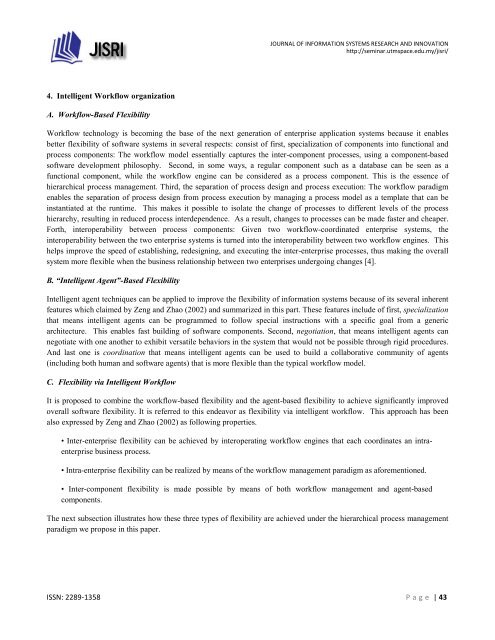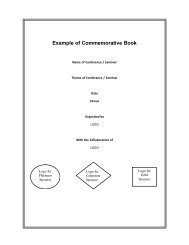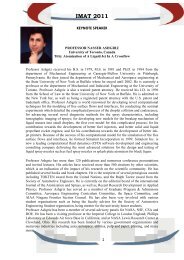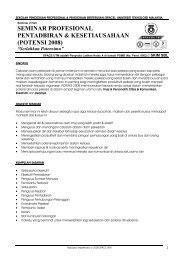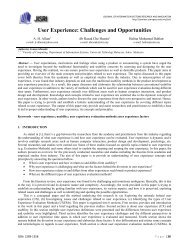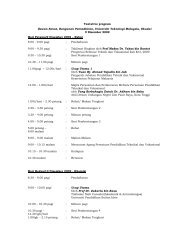Download Full Text - space seminar main page
Download Full Text - space seminar main page
Download Full Text - space seminar main page
- No tags were found...
Create successful ePaper yourself
Turn your PDF publications into a flip-book with our unique Google optimized e-Paper software.
JOURNAL OF INFORMATION SYSTEMS RESEARCH AND INNOVATIONhttp://<strong>seminar</strong>.utm<strong>space</strong>.edu.my/jisri/4. Intelligent Workflow organizationA. Workflow-Based FlexibilityWorkflow technology is becoming the base of the next generation of enterprise application systems because it enablesbetter flexibility of software systems in several respects: consist of first, specialization of components into functional andprocess components: The workflow model essentially captures the inter-component processes, using a component-basedsoftware development philosophy. Second, in some ways, a regular component such as a database can be seen as afunctional component, while the workflow engine can be considered as a process component. This is the essence ofhierarchical process management. Third, the separation of process design and process execution: The workflow paradigmenables the separation of process design from process execution by managing a process model as a template that can beinstantiated at the runtime. This makes it possible to isolate the change of processes to different levels of the processhierarchy, resulting in reduced process interdependence. As a result, changes to processes can be made faster and cheaper.Forth, interoperability between process components: Given two workflow-coordinated enterprise systems, theinteroperability between the two enterprise systems is turned into the interoperability between two workflow engines. Thishelps improve the speed of establishing, redesigning, and executing the inter-enterprise processes, thus making the overallsystem more flexible when the business relationship between two enterprises undergoing changes [4].B. “Intelligent Agent”-Based FlexibilityIntelligent agent techniques can be applied to improve the flexibility of information systems because of its several inherentfeatures which claimed by Zeng and Zhao (2002) and summarized in this part. These features include of first, specializationthat means intelligent agents can be programmed to follow special instructions with a specific goal from a genericarchitecture. This enables fast building of software components. Second, negotiation, that means intelligent agents cannegotiate with one another to exhibit versatile behaviors in the system that would not be possible through rigid procedures.And last one is coordination that means intelligent agents can be used to build a collaborative community of agents(including both human and software agents) that is more flexible than the typical workflow model.C. Flexibility via Intelligent WorkflowIt is proposed to combine the workflow-based flexibility and the agent-based flexibility to achieve significantly improvedoverall software flexibility. It is referred to this endeavor as flexibility via intelligent workflow. This approach has beenalso expressed by Zeng and Zhao (2002) as following properties.• Inter-enterprise flexibility can be achieved by interoperating workflow engines that each coordinates an intraenterprisebusiness process.• Intra-enterprise flexibility can be realized by means of the workflow management paradigm as aforementioned.• Inter-component flexibility is made possible by means of both workflow management and agent-basedcomponents.The next subsection illustrates how these three types of flexibility are achieved under the hierarchical process managementparadigm we propose in this paper.ISSN: 2289-1358 P a g e | 43


